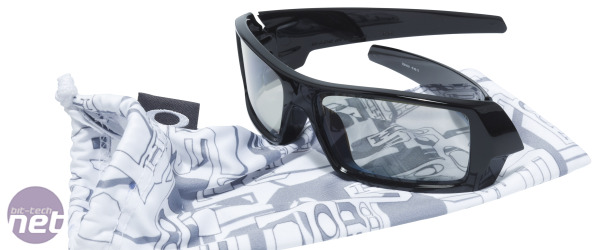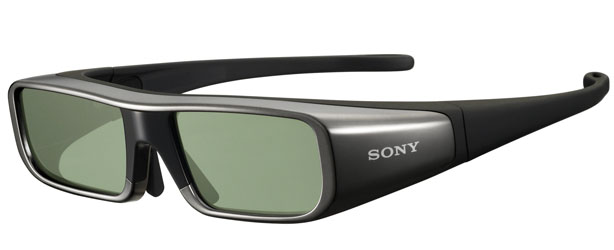AMD on Active 3D
We also support some frame marking schemes for 3D over dual-link DVI. There's no standard for dual-link DVI at the moment, but we've enabled at least one frame mark scheme for our consumer guys, and our workstation partners also have a number of frame mark schemes over DVI.With HDMI 1.4a, we use the frame packing standard, and that's kind of where our involvement ends – at that industry standard – the display can use whatever technology it wants to display stereo 3D – it can use active shutter glasses, it can use passive glasses, as long as we send out HDMI 1.4a, then the display can take that in and know what to do with it.
BT: So you could use passive glasses as well as active shutter glasses?
SP: Absolutely – we just send it over our port. For example, the new LG displays use passive 3D glasses with line-interleave technology, so we just send full-resolution HDMI 1.4a, and all the rest of the magic happens at the display. We don't really care what technology the display is using; whether it's active shutter or line-interleave, we just send that industry standard signal and the display takes care of the rest.
 There's no reason why you couldn't use third-party polarising glasses, such as this Oakley pair, with an HD3D setup
There's no reason why you couldn't use third-party polarising glasses, such as this Oakley pair, with an HD3D setupBT: Could you use third-party passive glasses, such as those made by Oakley, with HD3D?
Shane: Yeah, we support all that. I mean, Oakley just does it with regular polarised glasses, but even for active shutter systems there are people putting out semi-universal active shutter systems where they have knowledge of the IR protocols for the display manufacturers. Either way, we don't have to do any driver updates to hook into the glasses and detect the protocols.
We'd also like to see the industry developing an industry standard for active shutter glasses that have some kind of sync signal. The consumer electronics association (CEA) has put out a request for proposals for a standard for active shutter glasses, so we'd definitely support that.
If there was a standard for active shutter glasses, then all the monitors and glasses from all manufacturers would be interoperable with each other, and that's great because companies could then get the economies of scale, produce glasses for multiple vendors and bring down the price of glasses. We don't believe in $200 stereo 3D glasses – that's a barrier and the price needs to come in order to drive market adoption.
There's also some really interesting thinking going on in terms of polarised glasses at the moment. Most of the polarised displays out there right now are line-interleave – what we call a pattern retarder polariser. However, Samsung and RealD have just announced their RD3D technology, which is like an active polariser – it's like a film that goes over the display, and it adjusts the polarisation depending on which frame is on the display.
That would be really cool as well, because you could use the same passive polarised glasses that everyone's putting out now, but because of the active polariser you could have full resolution. This is all very encouraging for us, because it validates our strategy in a way – passive glasses are all interoperable.
BT: Will there ever be AMD HD3D glasses, like Nvidia's 3D Vision glasses?
SP: I'll say very clearly that AMD is not in the business of producing and marketing active shutter glasses, or any stereo 3D glasses. Our stance is that the glasses should be controlled by the display, which means they're typically provided by the display vendor. There are a few reasons for that, and the first and best reason is that it provides the best synchronisation between the display and glasses
 Rather than making its own glasses, AMD's system instead makes use of the glasses provided by the display manufacturer, such as this Sony pair
Rather than making its own glasses, AMD's system instead makes use of the glasses provided by the display manufacturer, such as this Sony pairIf you have glasses that are controlled by a USB emitter, there can be delays to the USB link, to the host system and to the display link that can throw off the synchronisation. Also, the USB driver needs to have specific knowledge of the timings of the display in order to make it work, and that will have to be qualified before the display can be released, so the USB emitter driver has to be updated.
Ours is a much more robust system. It's a lot easier for the display to know exactly when the left eye frame is on the screen and send out that signal. Our system is easier for end users and it's plug and play – you get a display and glasses come with it, or you buy them from the manufacturer after the fact, and you just turn it on and it works.
BT: What happens if you buy a monitor that doesn't come with 3D glasses?
SP: If the TV or monitor doesn't come with glasses, the idea is that you can get the glasses after the fact by going to the monitor vendor. If you buy a Sony 3DTV, and it doesn't actually come with the glasses, then you can buy the Sony glasses that match the brand and you know that they're going to work. It's like the glasses are a part of the display – it's not like our competition where the display has one brand and the glasses are made by Nvidia.

MSI MPG Velox 100R Chassis Review
October 14 2021 | 15:04









Want to comment? Please log in.